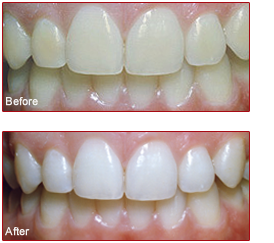In this treatment method, tooth bleaching chemicals are applied to the surface of your teeth. They brighten the natural color of teeth by removing superficial discoloration. Your dentist can do that in practice. The Orland Park Cosmetic Dentist can be the best choice there.
Alternatively, you can also do it yourself at home with a prescription or over-whitening brightener. Brightening works best with teeth that have yellowed through factors such as smoking, coffee or tea. Talk to your dentist about possible side effects of bleaching, such as gum irritation or teeth sensibility disorders.

Veneers and laminates: Tooth covers for a radiant smile
It is just a small rash on the incisor and causes no pain. But you do not like the look. Fortunately, modern procedures and materials allow the repair of these irregularities as well as discolored teeth, so you can keep a bright smile for life.
Facade works serve the aesthetics
Just as a house gets a new look through a new exterior wall cladding, the appearance of a tooth can be changed through a veneer. Technically, a veneer is any form of tooth cover. It is also called a veneer. It is attached to the tooth surface using special adhesives, this is known as bonding. First, the tooth surface is roughened by a weak acid. The liquid liver then serves the long-term connection of the material with the tooth. Dental veneers can improve the appearance of your teeth, especially if the following defects are present:
Discoloration: There are discolorations that cannot be eliminated by bleaching. Medications such as tetracycline may have already discolored teeth during childhood. Irregularities in the enamel can sometimes lead to different shades within a tooth.
Pit Inaccuracies: Over time, teeth can wear out, become jagged, or it can shatter a corner. This can make them look shorter. Other teeth may have an ugly shape or look stunted compared to neighboring teeth.
Veneers can reduce gaps or mask malposition. But they are not always the best solution for teeth that are crooked and crooked and otherwise recommend themselves for orthodontic correction. A cover on a missing tooth permanently changes its shape and can make the decision for a jaw surgery postponed.
There are basically 2 types of dental veneers:
Keramiklaminatveneers
These are thin ceramic covers that are firmly attached to your tooth. They can serve as a veneer for the front. Mostly, however, the ceramic laminates surround a corner and cover almost three-quarters of the tooth surface.
First, some enamel is abraded at the front and sides to make room for the veneer, without the tooth looking too thick afterward. A subsequent impression later serves the dental laboratory for the production of a precisely fitting cover. Then the color tone is set so that the veneer used can inconspicuously line up with the other teeth. The application of your ceramic vein takes place in a second session.
Resin-based plastic veneer
They are made of the same material that is used for dental fillings and are applied directly to the surface to compensate for irregularities. As with the ceramic veneer, some enamel can be removed in preparation. A plastic of matching color is mixed and applied to the surface where it can be directly modeled by your dentist. The plastic is cured with a special UV lamp, polished and smoothed so that it no longer differs from the original.

